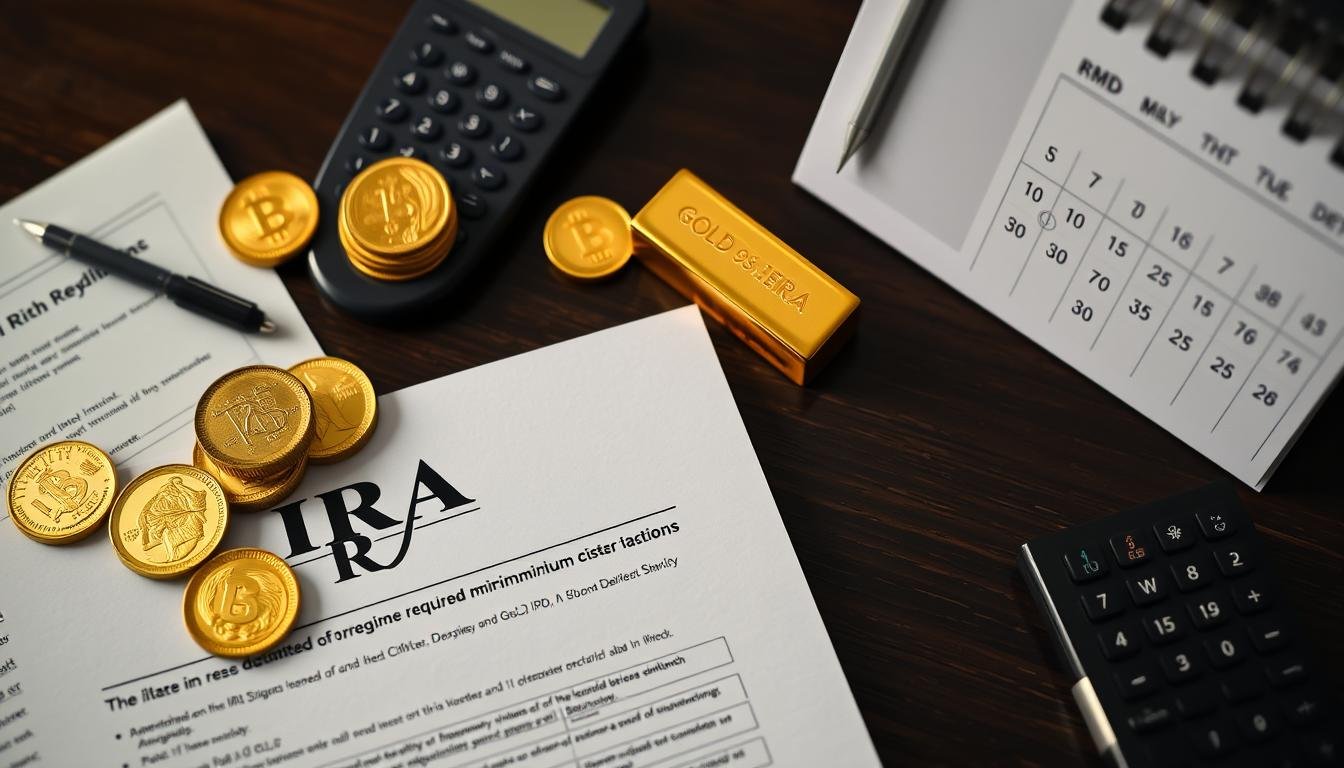Gold IRAs offer valuable portfolio diversification and inflation protection, but like traditional retirement accounts, they’re subject to Required Minimum Distributions (RMDs). Understanding these mandatory withdrawals is crucial for avoiding substantial penalties and optimizing your precious metals retirement strategy. This comprehensive guide explains everything you need to know about Gold IRA required minimum distributions, from calculation methods to distribution options and strategic planning.
What Are Required Minimum Distributions for Gold IRAs?
Required Minimum Distributions (RMDs) are mandatory withdrawals the IRS requires retirement account owners to take annually once they reach a certain age. These rules apply to traditional IRAs, including Self-Directed Gold IRAs that hold physical precious metals like gold, silver, platinum, and palladium.
The SECURE Act of 2019 and SECURE 2.0 Act of 2022 changed the RMD age requirements. As of 2023, RMDs must begin at age 73. This age will increase to 75 in 2033.
The purpose of RMDs is to ensure retirement accounts are used during your lifetime rather than solely as wealth transfer vehicles. The government wants to collect tax revenue from these tax-advantaged accounts, which is why they mandate these distributions.
For Gold IRA owners, RMDs present unique considerations because your retirement assets are held in physical precious metals rather than easily divisible paper assets like stocks or mutual funds.

Gold IRA Required Minimum Distribution Rules and Calculations
Age Requirements and Deadlines
Understanding when you must start taking RMDs is essential for proper retirement planning and avoiding penalties.
| Birth Year | RMD Starting Age | First RMD Deadline |
| 1950 or earlier | 72 | April 1 of the year after turning 72 |
| 1951-1959 | 73 | April 1 of the year after turning 73 |
| 1960 or later | 75 (effective 2033) | April 1 of the year after turning 75 |
For your first RMD, you have until April 1 of the year following the year you reach the required age. For all subsequent years, you must take RMDs by December 31. Be aware that if you delay your first RMD until April of the following year, you’ll need to take two distributions in that calendar year.
Calculating Your Gold IRA RMD Amount
The IRS provides a specific formula for calculating your required minimum distribution:
RMD = Account Balance (as of December 31 of previous year) ÷ Life Expectancy Factor
Life expectancy factors come from IRS Publication 590-B and are based on your age. Here’s a sample of the Uniform Lifetime Table for 2024:
| Age | Life Expectancy Factor | Age | Life Expectancy Factor |
| 73 | 26.5 | 80 | 20.2 |
| 75 | 24.6 | 85 | 16.0 |
| 78 | 22.0 | 90 | 12.2 |
Example: If you’re 75 years old with a Gold IRA valued at $250,000 on December 31 of last year, your RMD calculation would be: $250,000 ÷ 24.6 = $10,162.60
For Gold IRAs, determining the fair market value requires valuing your precious metals based on the spot price as of December 31. Your Gold IRA custodian will typically provide this valuation for you.

Gold IRA Distribution Options: Cash vs. In-Kind
When taking required minimum distributions from your Gold IRA, you have two primary options: cash distributions or in-kind distributions. Each has different implications for your retirement strategy.
Cash Distributions

With cash distributions, your Gold IRA custodian sells a portion of your precious metals at the current market value to generate the cash needed for your RMD. The cash is then distributed to you.
In-Kind Distributions
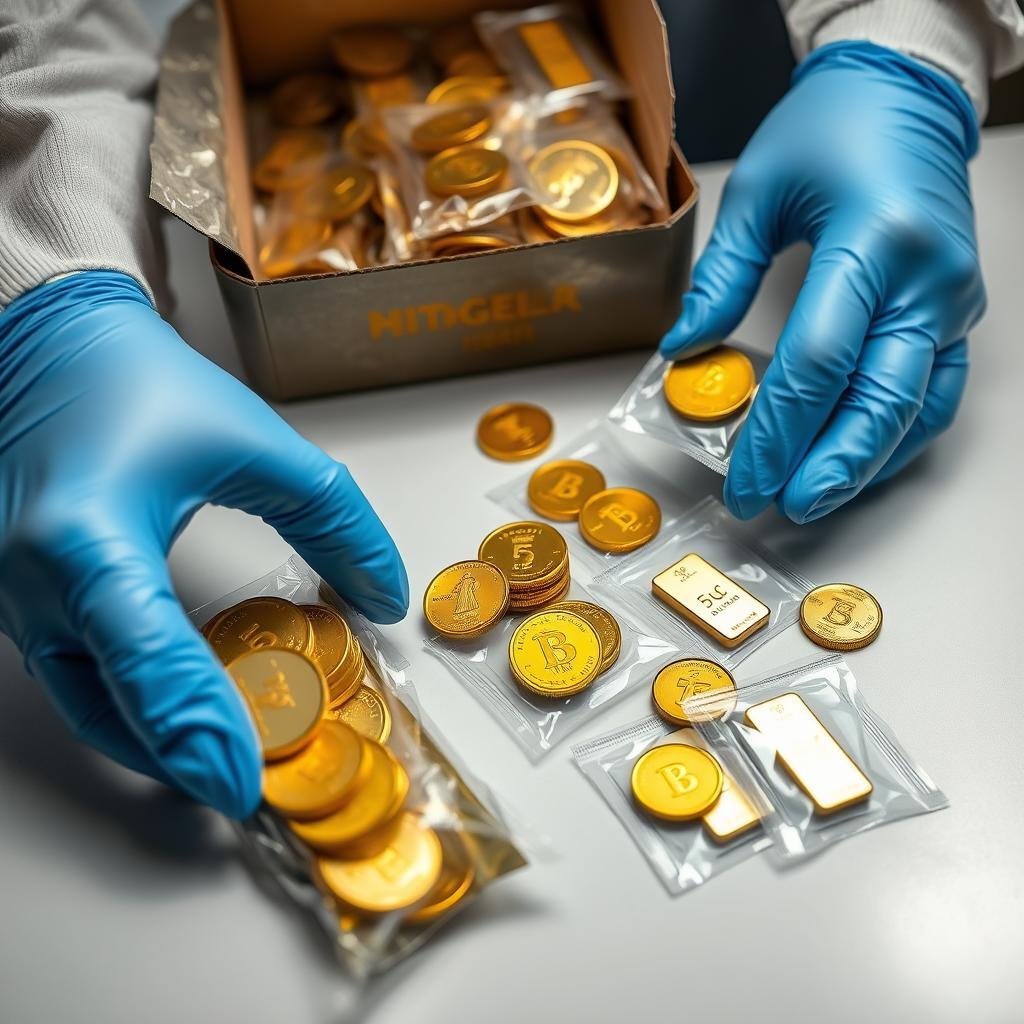
In-kind distributions allow you to take physical possession of the precious metals themselves. The fair market value of the distributed metals counts toward satisfying your RMD requirement.
Important: Whether you choose cash or in-kind distributions, the fair market value of the distribution is considered taxable income. The distribution method doesn’t change your tax obligation.
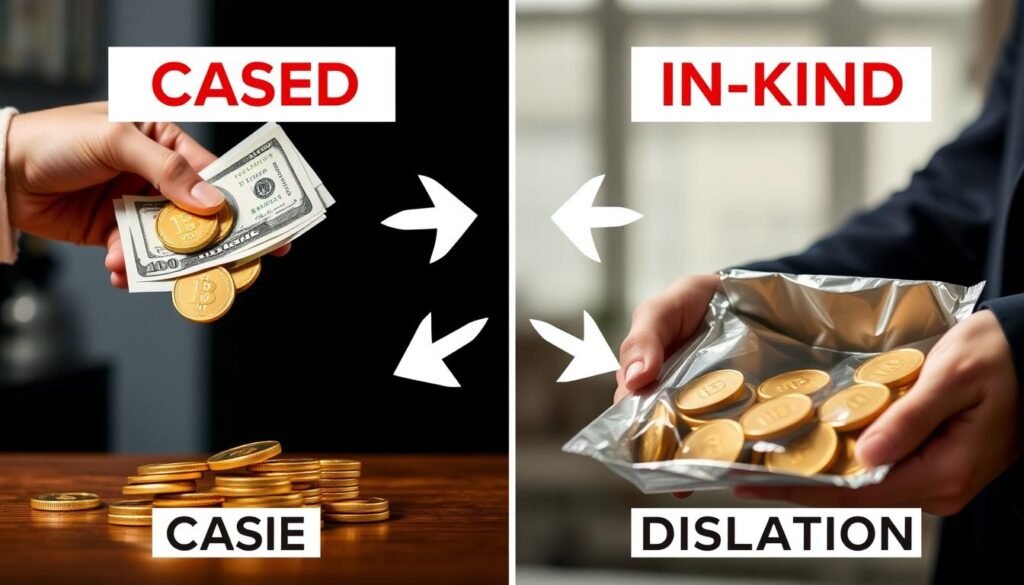
Tax Implications and Penalties for Gold IRA RMDs
Tax Treatment of Distributions
Distributions from traditional Gold IRAs are generally taxed as ordinary income in the year you receive them. The tax rate depends on your total income and tax bracket for that year.
Unlike some other investments, there’s no special capital gains treatment for precious metals in an IRA. Even if your gold has appreciated significantly since purchase, distributions are taxed at your ordinary income rate.
Important Tax Consideration: If you take physical possession of precious metals through an in-kind distribution, you’ll owe taxes on the fair market value of those metals at the time of distribution, not on their original purchase price.
Penalties for Missed RMDs
Failing to take your required minimum distribution has serious consequences. The IRS penalty is substantial:
If you fail to take your RMD, the IRS can impose an excise tax of 25% on the amount not withdrawn. This penalty can be reduced to 10% if you correct the missed RMD in a timely manner.
For example, if your required distribution was $10,000 and you failed to take it, you could owe a penalty of $2,500. This is in addition to the regular income tax you’ll eventually pay on the distribution.
Avoid Costly RMD Mistakes
Don’t risk hefty penalties on your retirement savings. Our Gold IRA specialists can help ensure you’re meeting all IRS requirements while optimizing your precious metals strategy.

Strategic Planning for Gold IRA Required Minimum Distributions
Timing Your Distributions
Strategic timing of your RMDs can help optimize your tax situation and precious metals position:
Multiple IRA Consolidation Strategy
If you have multiple IRAs (including traditional IRAs and Gold IRAs), you have flexibility in how you satisfy your RMD requirements:
While you must calculate the RMD separately for each IRA, you can take the total RMD amount from any one IRA or a combination of IRAs. This allows you to leave your Gold IRA intact if you prefer, by taking distributions from other traditional IRAs instead.
This strategy can be particularly valuable if you want to maintain your precious metals position during market fluctuations or avoid the complexities of valuing and distributing physical assets.
Qualified Charitable Distributions (QCDs)
For philanthropically-minded investors, Qualified Charitable Distributions offer a tax-efficient way to satisfy RMD requirements:
While QCDs typically involve cash, you could sell a portion of your Gold IRA holdings and direct the proceeds to charity through this method.

Gold IRA RMD Calculation Scenarios
Scenario 1: Basic RMD
Profile: John, age 74
Gold IRA Value: $200,000
Life Expectancy Factor: 25.5
RMD Calculation: $200,000 ÷ 25.5 = $7,843.14
John must withdraw at least $7,843.14 this year. He chooses a cash distribution, requiring his custodian to sell approximately 4 ounces of gold (assuming $1,950/oz) to satisfy the requirement.
Scenario 2: In-Kind Distribution
Profile: Maria, age 76
Gold IRA Value: $350,000
Life Expectancy Factor: 23.7
RMD Calculation: $350,000 ÷ 23.7 = $14,767.93
Maria prefers physical possession and takes an in-kind distribution of 7.5 ounces of gold coins (valued at $14,775). She’ll pay income tax on $14,775 but maintains ownership of the physical gold.
Scenario 3: Multiple IRA Strategy
Profile: Robert, age 80
Gold IRA Value: $150,000
Traditional IRA Value: $300,000
Life Expectancy Factor: 20.2
Total RMD: ($150,000 + $300,000) ÷ 20.2 = $22,277.23
Robert takes his entire RMD from his Traditional IRA, preserving his Gold IRA intact during a period of market volatility.
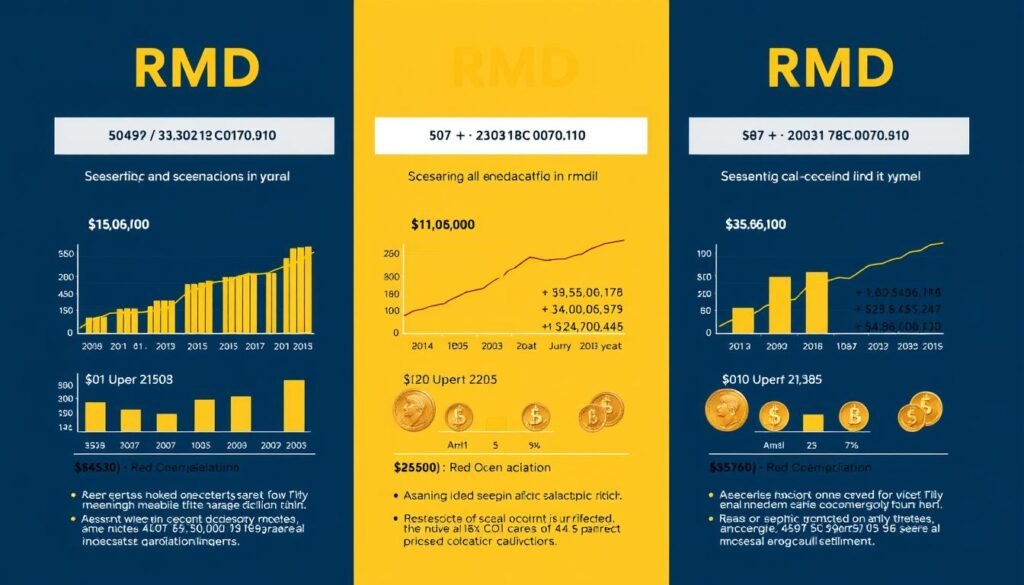
Frequently Asked Questions About Gold IRA Required Minimum Distributions
Are RMD percentages different for precious metals IRAs?
No, the RMD percentage calculation is the same for Gold IRAs as it is for traditional IRAs. The IRS uses the same Uniform Lifetime Table to determine the life expectancy factor regardless of what assets are held in the IRA. The difference lies in how the account value is determined (based on precious metals spot prices) and the distribution options available (cash vs. in-kind).
Can I reinvest my Gold IRA RMD into another account?
Yes, while you cannot roll over an RMD to another tax-advantaged retirement account, you can deposit the distribution into a taxable investment account after taking the distribution and paying the applicable taxes. This allows you to reinvest in precious metals or other assets outside of an IRA structure. Some investors choose to take cash distributions from their Gold IRA and then purchase precious metals in a personal account for continued exposure to the asset class.
Do Roth Gold IRAs have required minimum distributions?
No, Roth Gold IRAs are exempt from RMD requirements during the original owner’s lifetime. This makes Roth Gold IRAs an excellent vehicle for those who want to maintain their precious metals holdings without mandatory distributions. However, inherited Roth IRAs may be subject to distribution requirements for non-spouse beneficiaries under the SECURE Act’s 10-year rule.
How do I value my Gold IRA for RMD calculations?
Your Gold IRA custodian will provide a fair market value (FMV) statement at the end of each year based on the spot prices of your precious metals holdings as of December 31. This valuation is used to calculate your RMD for the following year. It’s important to review this valuation for accuracy, especially if you hold numismatic coins or other precious metals that might have values above their metal content.
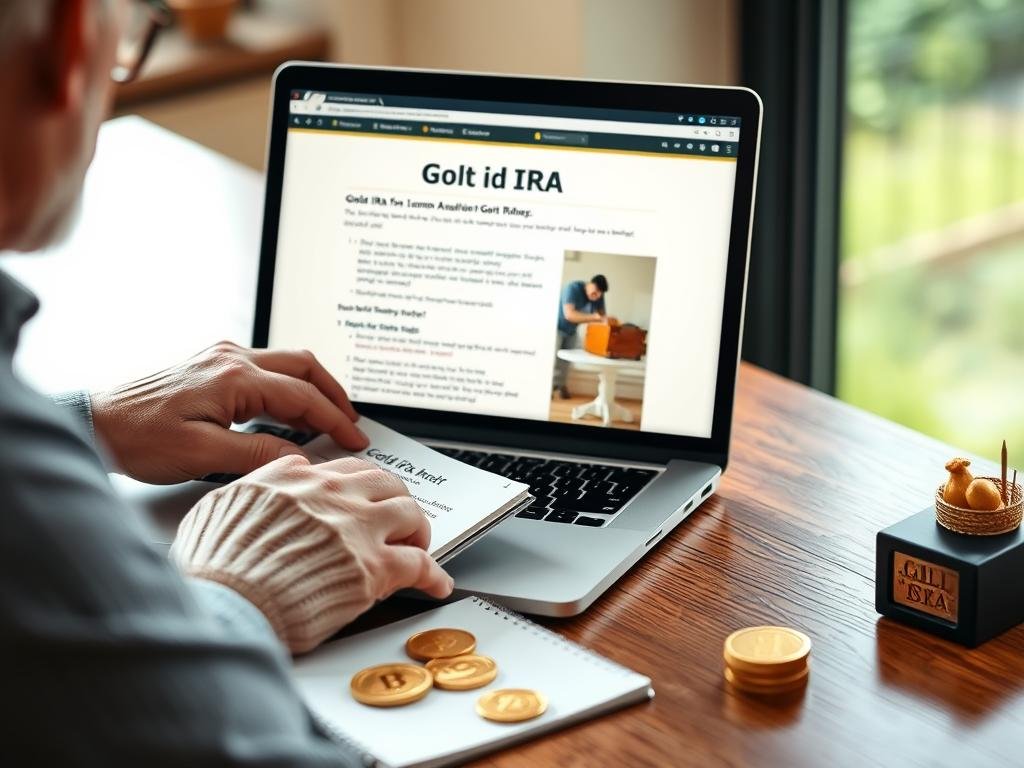
Planning for Your Gold IRA Required Minimum Distributions
Understanding and properly planning for your Gold IRA required minimum distributions is essential for maximizing your retirement strategy and avoiding costly penalties. The unique nature of precious metals investments requires special consideration when approaching RMDs, whether you choose cash distributions, in-kind distributions, or a combination approach.
By staying informed about current RMD rules, working closely with knowledgeable advisors, and implementing strategic distribution plans, you can maintain the benefits of your precious metals investments while satisfying IRS requirements.
Get Expert Guidance on Your Gold IRA Required Minimum Distributions
Don’t navigate complex RMD rules alone. Our Gold IRA specialists can help you develop a personalized distribution strategy that protects your precious metals investment while ensuring full IRS compliance.
Prefer to speak with an expert?

